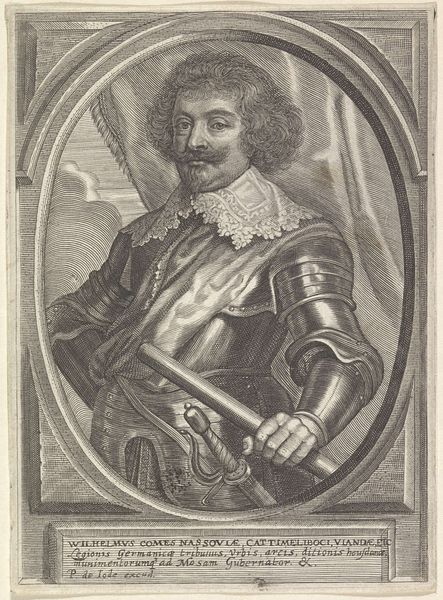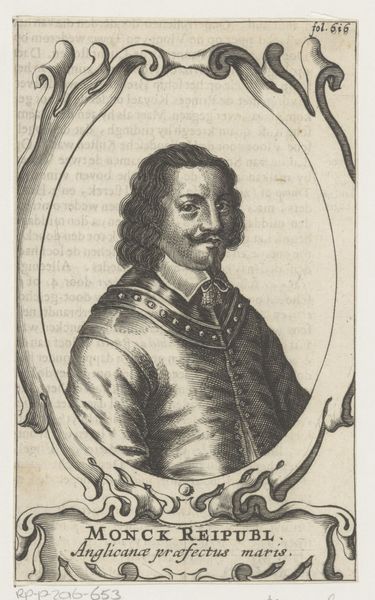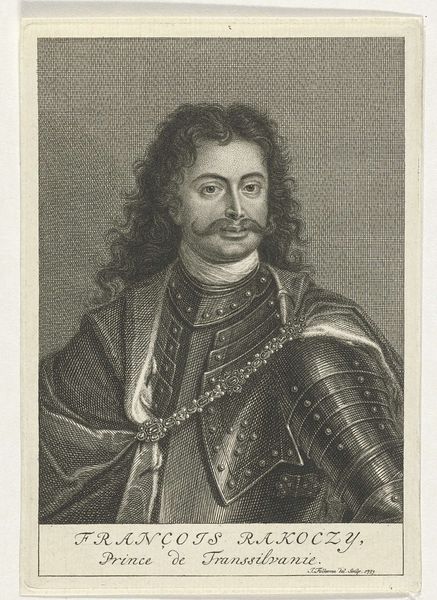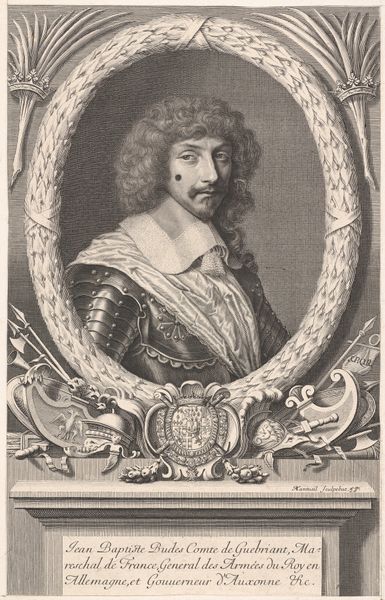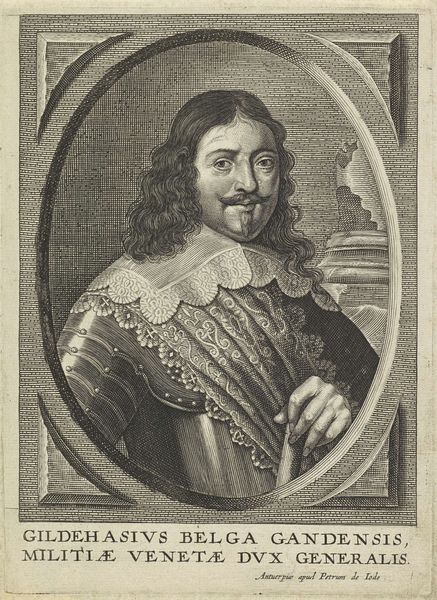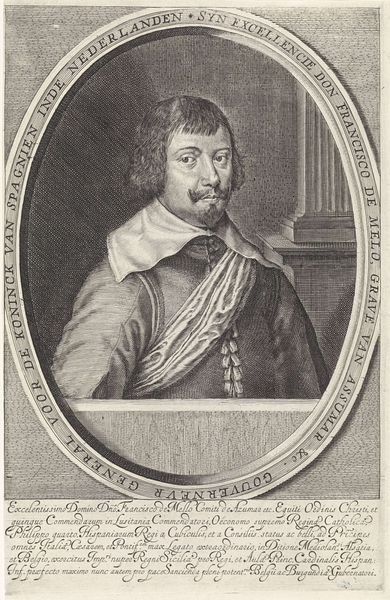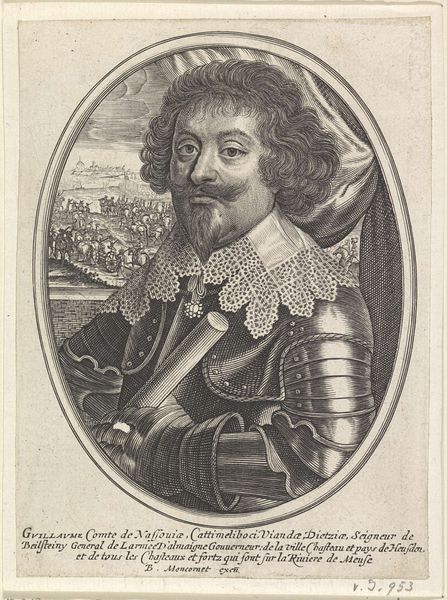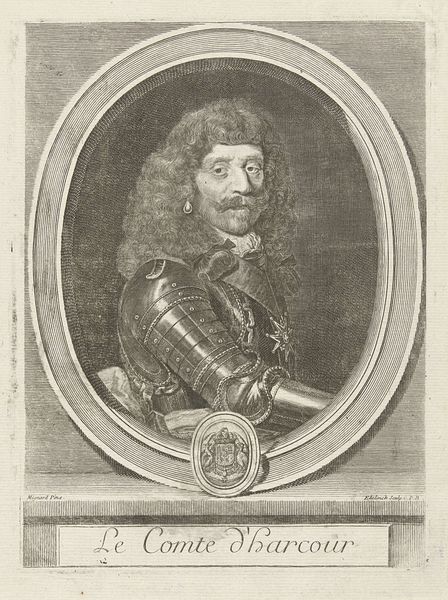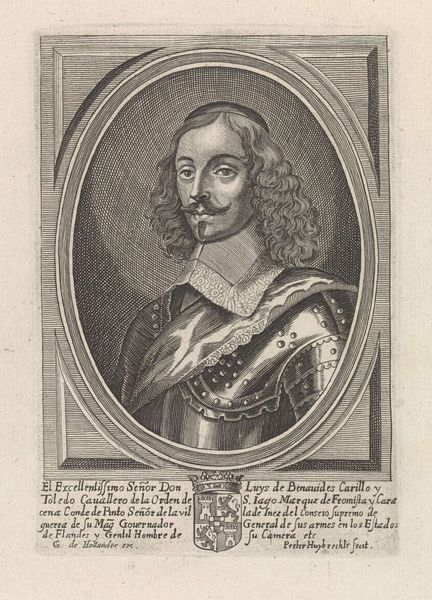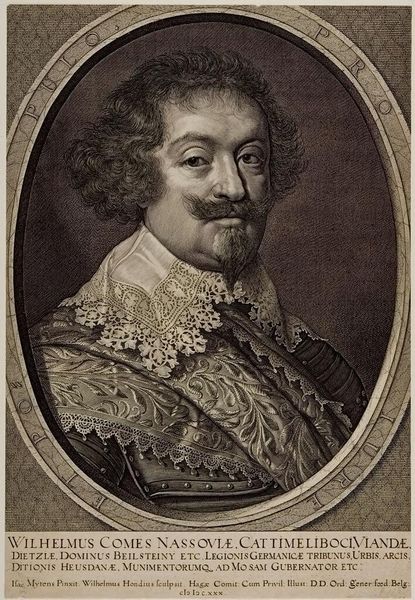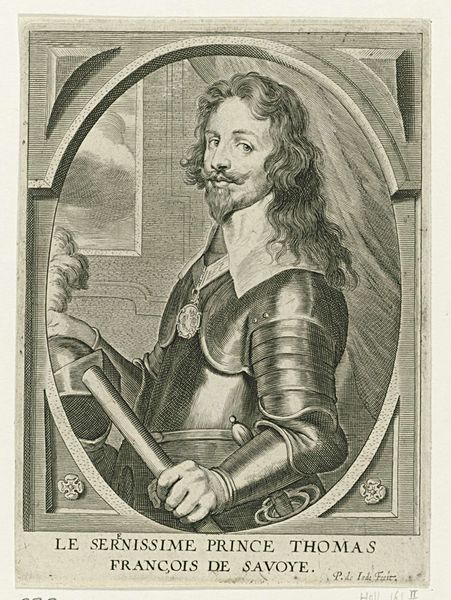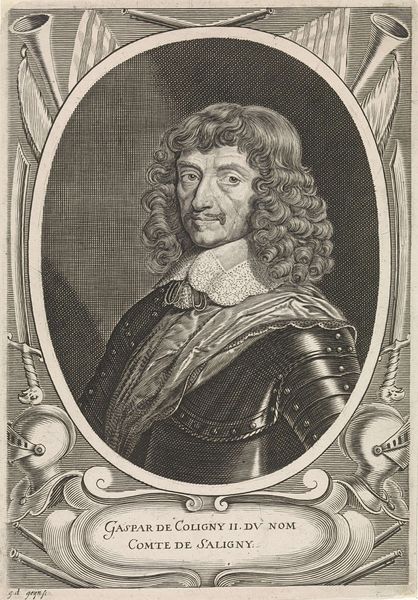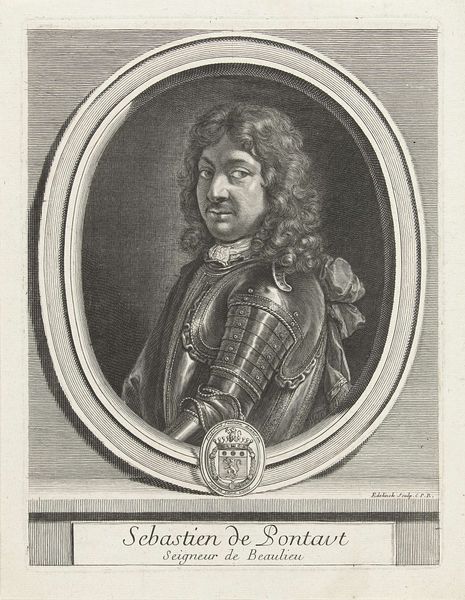
metal, engraving
#
portrait
#
baroque
#
metal
#
history-painting
#
engraving
Dimensions: height 240 mm, width 177 mm
Copyright: Rijks Museum: Open Domain
Curator: Here we have "Portret van Ottavio Piccolomini", an engraving executed on metal sometime between 1634 and 1675, currently residing in the Rijksmuseum. The artist is Lucas Vorsterman I. Editor: My first impression is one of calculated gravity. The stark contrast emphasizes the sitter's imposing figure, his gaze fixed and unflinching. There's a sense of power radiating from this image, meticulously crafted through line and shadow. Curator: Absolutely. Consider the social context. This piece likely served to bolster Piccolomini's public image, showcasing him as a commanding figure of the Baroque era. Engravings, like this one, played a crucial role in disseminating imagery and reinforcing authority. Editor: Let's consider the artistic choices. Notice how the intricate details of the armor and lace collar contrast with the relatively plain background, drawing our eye directly to Piccolomini’s face. The precise rendering speaks to a masterful command of the engraving technique. What symbolism might be at play here? Curator: The armor obviously represents military prowess, and perhaps even the weight of responsibility on Piccolomini’s shoulders. His direct gaze suggests honesty and forthrightness, valuable traits to emphasize during a period of immense social and political turmoil. The baton in his hand functions as a scepter denoting authority and leadership, and together these artistic choices effectively portray Piccolomini as a powerful military commander and aristocratic leader. Editor: I agree that there’s the baton as the obvious symbol of command. It is an exceptional portrait not only due to its technical brilliance but also due to how Vorsterman deftly portrays this historical personage through form and composition. Curator: It's a compelling reminder of how artistic representations were—and still are—used to shape public perception and legitimize power. Editor: Precisely, it's the marriage of technical skill and contextual awareness that makes such works deeply engaging, even centuries later.
Comments
No comments
Be the first to comment and join the conversation on the ultimate creative platform.
